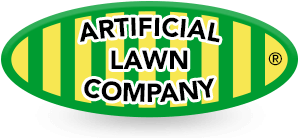 Add My Company
Add My Company
Sign In

Autumn has arrived, which means that winter is just around the corner, and each of these seasons brings unique challenges from a gardening perspective. This is especially true when it comes to artificial grass lawn maintenance services, as many of us are looking to prepare for the upcoming party season.
From bonfire night to New Years’ Eve fireworks, your garden gets much more use in the autumn and winter than you might initially imagine. Despite this, the garden is often forgotten about during these seasons as we anticipate cosy nights in. While you look to spruce up your living room and kitchen, make sure you also have your hands on the necessary artificial grass maintenance tools, so your entire property is in good stead for party season.
When you initially installed your artificial lawn, it might’ve been in the hope that you’d never have to maintain your grass again. Despite this, any outdoor surface will require some form of maintenance, and you’ll need the top tips and maintenance products for artificial lawns to achieve this, as detailed below.
Collect Fallen Leaves
With autumn comes a lot of leaves on the ground; however, not only are they not aesthetically pleasing, but they can block the filter holes in your synthetic lawn. Leaves are comprised of little particles that can get lodged in your turf’s draining system, which can lead to issues such as a damp smell and even flooding.
In order to collect fallen leaves from your synthetic grass, you can either use a leaf blower, garden vacuum, garden broom or garden rake, or a soft-headed brush. In saying this, you should take extra care when raking an artificial lawn, ensuring that you don’t apply pressure and only glide the tool across the surface to avoid damage. Also, avoid using any metal tools for maintenance as these can cause damage to the grass fibres. Once the debris is cleared it's best to give the lawn a good brush to keep the fibres upright.
Avoid Moss and Mould
If one thing is certain, it’s that the British autumn and winter are notorious for damp weather, producing the ideal environment for moss and mould to grow. In fact, airborne spores can attach themselves to your synthetic turf and, without treatment, will spread. Therefore, it’s vital that mould or moss is treated as a matter of urgency; thankfully, it’s a simple fix. A bio-degradable anti-moss treatment should do the trick in clearing your lawn of moss/mould and avoiding any damage to the artificial fibres.
In order to avoid the development of moss and mould in the first place, you should ensure your drainage system is functioning properly so that moss and mould are unable to build up. Similarly, your lawn should be brushed regularly, and a thorough cleaning should be performed at least twice a year.
Watch out for Frost
Unfortunately, we can’t control the weather, but we can take measures to prevent it from causing problems. When frozen, synthetic turf can become slippery, so it’s important to take care during the chillier months. If you require regular access across your lawn, it might be an idea to install a pathway or steeping stones to avoid slips and falls.
Allow Soft Snow to Melt Naturally
If snow settles atop your synthetic lawn and it’s not compacted, you should allow this to melt naturally. In the instance that salt needs to be used, be sure to only use a small amount, as applying salt excessively can lead to the turf’s drainage holes becoming clogged and limit your lawn’s ability to drain liquid.
Use a Plastic Shovel
When it comes to clearing your synthetic grass of snow, you should be very particular about the tools you use. A plastic shovel should always be used in favour of a metal one, as metal can harm the frozen fibres of the artificial turf beneath the blanket of snow.
Care for Your Synthetic Grass with Artificial Lawn Company
Here at Artificial Lawn Company, we’re dedicated to providing the most fuss-free garden solutions for our customers; despite this, a little maintenance here and there is still required. Contact us to learn more about how you can maintain the health of your synthetic turf throughout autumn and winter.
For more information on How to Care for Your Artificial Lawn in Autumn and Winter talk to Artificial Lawn Company
Enquire Now
More Blogs
List your company on FindTheNeedle.
